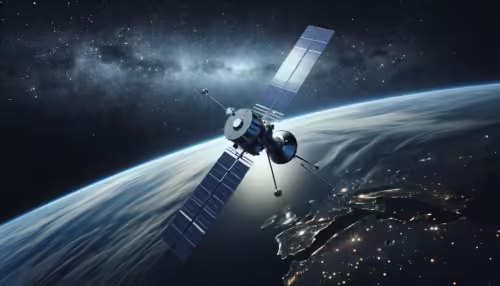Have you ever wondered how the European Space Agency (ESA) balances its commitment to scientific advancement with environmental responsibility? The world of space exploration is vast, with myriad missions that serve both to expand our knowledge of the cosmos and to push the boundaries of technological innovation. Yet, amid these ambitious goals, certain priorities stand out, such as the ESA’s Open Access Policy and its Clean Space Initiatives. Both are pivotal in demonstrating ESA’s dedication to not just exploring space, but doing so in a way that is sustainable and transparent.
As a leading space organization, ESA’s practices have global implications. Their adherence to open access and environmental considerations sets a precedent for space agencies worldwide. This article lays out the core elements of ESA’s initiatives, detailing their impact on current and future missions. Understanding these efforts provides insight into a future where space exploration can thrive alongside ecological responsibility.
Table of Contents
A Historical Context of ESA’s Open Access Policy
The ESA has a rich history rooted in cooperation among European nations, dedicating itself to the peaceful exploration of space. Formed in 1975, ESA has consistently aimed to serve as a collaborative platform for its member countries, fostering technology exchange and scientific research. In its quest for expansive knowledge, the agency adopted an Open Access Policy, which reflects its commitment to transparency and inclusivity.
The Evolution of Open Access
Open access in the context of scientific research refers to the unrestricted online access to research outputs such as journal articles and data. For the ESA, embracing open access means democratizing information, breaking down access barriers, and promoting widespread dissemination of knowledge. The policy not only enhances scientific progress but also stimulates innovation by making research findings universally available.
Current Trends in Open Access
The demand for transparency in scientific research has never been more prominent. With increased scrutiny from the public and fellow researchers, institutions like ESA are under pressure to provide open access to make scientific discoveries accessible to all. Presently, open access is a driving force behind collaborative efforts and a tool for increasing the visibility of scientific work.

This image is property of pixabay.com.
Key Concepts Behind ESA’s Clean Space Initiatives
ESA’s Clean Space Initiatives are critical because they represent dedication to ecological preservation amidst space advancement. Introduced in 2012, the initiative focuses on minimizing the environmental impact of space missions across all stages—from design and production to operation and disposal.
Components of Clean Space
Eco-Design: This aspect involves integrating environmental considerations into the design phase of space missions. By using eco-friendly materials and processes, the ESA reduces resource consumption and waste production.
Space Debris Mitigation: With thousands of satellites orbiting Earth, the accumulation of space debris presents a significant challenge. ESA addresses this issue by implementing strategies to reduce waste generation in space and devising methods for debris removal.
End-of-Life Solutions: This focuses on developing technologies for the safe disposal or repurposing of spacecraft after mission completion to prevent space congestion and reduce environmental harm.
Case Study: The E.Deorbit Mission
One notable example of ESA’s dedication to clean space is the E.Deorbit mission. Scheduled as part of ESA’s Clean Space Initiative, this mission was aimed at capturing and safely deorbiting large items of space debris. Despite technical challenges and high costs, the project underscores ESA’s commitment to sustainable exploration. It serves as both a case study and a prototype for future missions focused on debris removal.

This image is property of pixabay.com.
Comparing Perspectives on Open Access and Clean Space Initiatives
ESA’s initiatives reflect a responsibility towards innovation balanced with accountability for environmental stewardship and public access to information. However, opinions on these efforts vary widely. To illustrate this, consider the following comparison:
| Aspect | Supporters’ View | Critics’ View |
|---|---|---|
| Open Access | Facilitates global collaboration and innovation | Can challenge intellectual property protections |
| Environmental Impact | Demonstrates commitment to sustainable practices | Often faces challenges in execution and funding |
| Space Debris Management | Essential for long-term viability of space missions | May divert resources from active exploration |
| Global Influence | Sets a benchmark for other space agencies | Risk of imposing European standards universally |
| Cost of Initiatives | Seen as investment in future generations | Viewed as financially burdensome |
Impact Assessment of ESA’s Initiatives
The initiatives by ESA are not merely theoretical or policy declarations; they have tangible impacts. Open Access policies allow researchers from developing nations to contribute to and benefit from European research, fostering global equity in scientific advancement. Meanwhile, Clean Space Initiatives guide technological developments that could prevent catastrophic space debris collisions, securing the safety of future missions and the sustainable use of low Earth orbit.

This image is property of pixabay.com.
Future Directions and Implications
Predictions for Open Access and Clean Space
In the future, the Open Access movement is likely to gain further momentum, with more research becoming publicly available, driving cross-border collaborations and innovations. Likewise, Clean Space Initiatives may evolve into more standardized global practices, spurred by increasing international pressure and technological advancements.
Broader Implications
The success of these ESA initiatives could reshape the space industry’s approach to transparency and sustainability. Should these frameworks prove effective, they could lead to enhanced cooperation among global space agencies, as well as catalyze legal and regulatory reforms aimed at space preservation practices.
In light of ESA’s efforts, one might ask: How will these initiatives influence other organizations’ approaches to space exploration and environmental responsibility?

Conclusion
The European Space Agency’s commitment to open access and clean space efforts underscores its dedication to pioneering a new frontier of exploration that is both inclusive and ecologically considerate. By setting high standards for transparency and environmental stewardship, ESA exemplifies a forward-thinking approach to space exploration. The agency not only charts paths through the stars but also paves the way for a future where space exploration is harmonized with planetary protection.
In contemplating ESA’s initiatives, you stand at the intersection of cutting-edge science and ecological ethics. These efforts by ESA are more than policies; they are promises for a future where space exploration serves all of humanity. What are your thoughts on this balance between exploration and preservation?
Feel inspired? To further understand ESA’s pioneering methodologies, delve deeper into their numerous initiatives and join the discussion on how they impact space exploration’s future.

